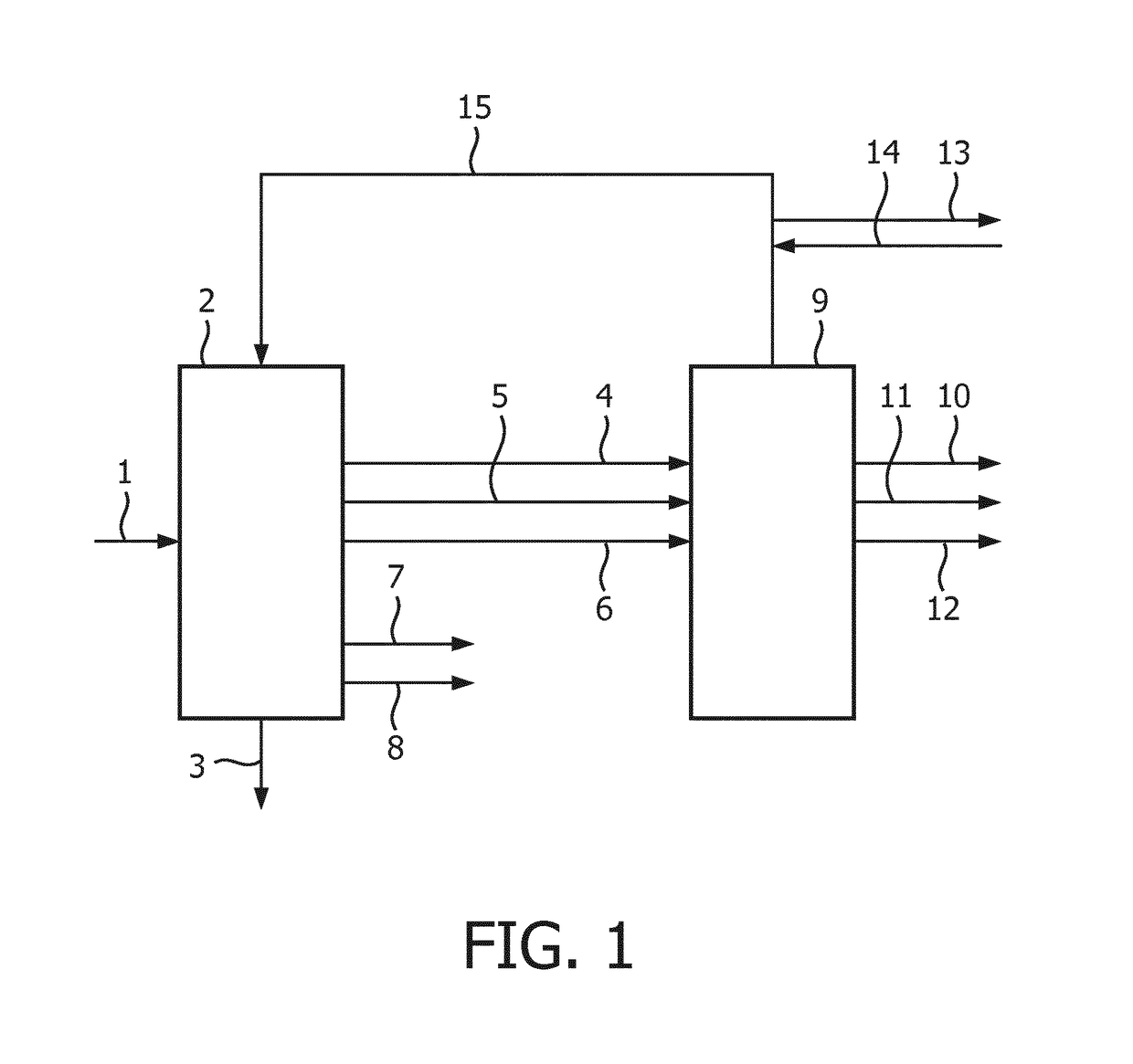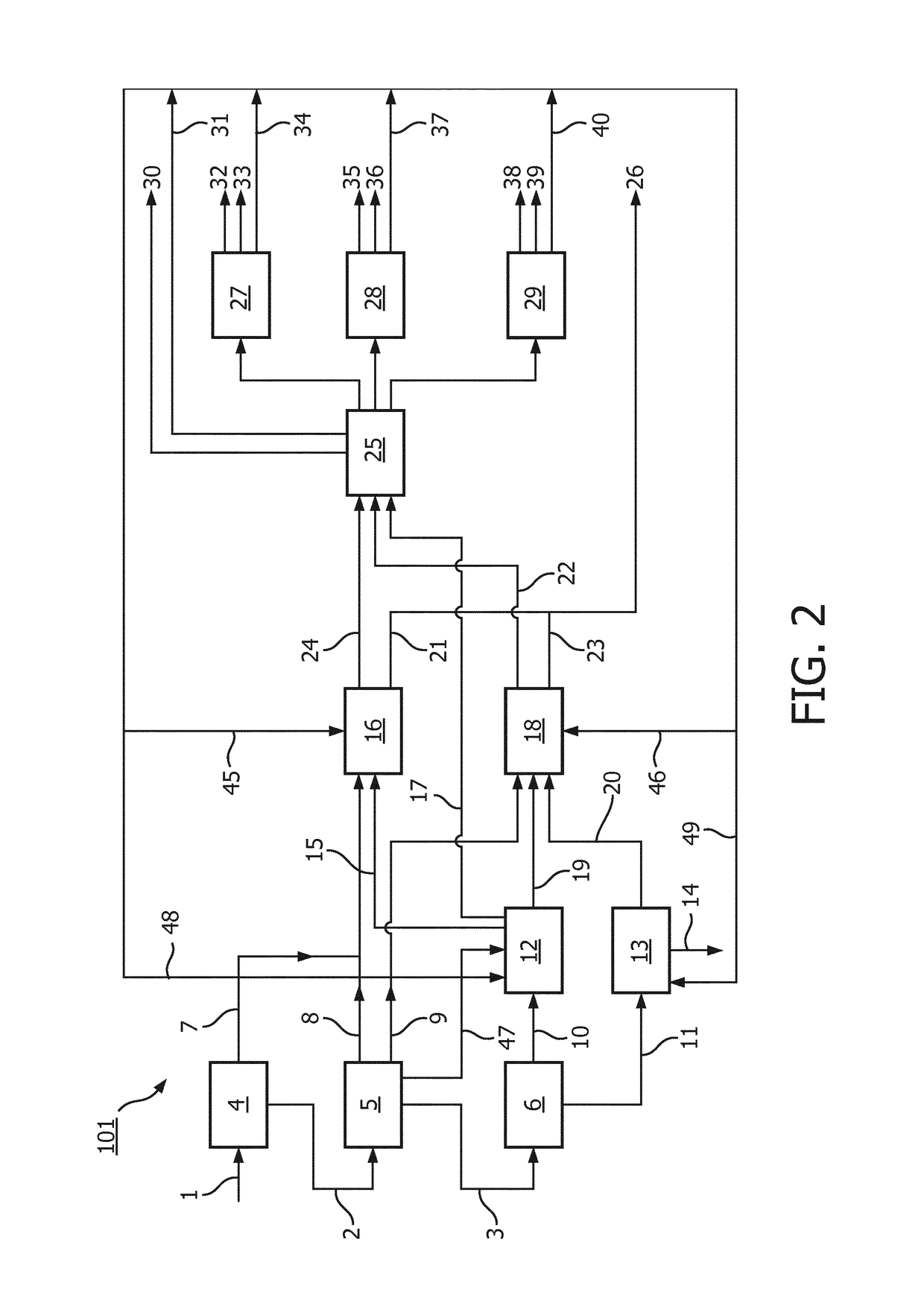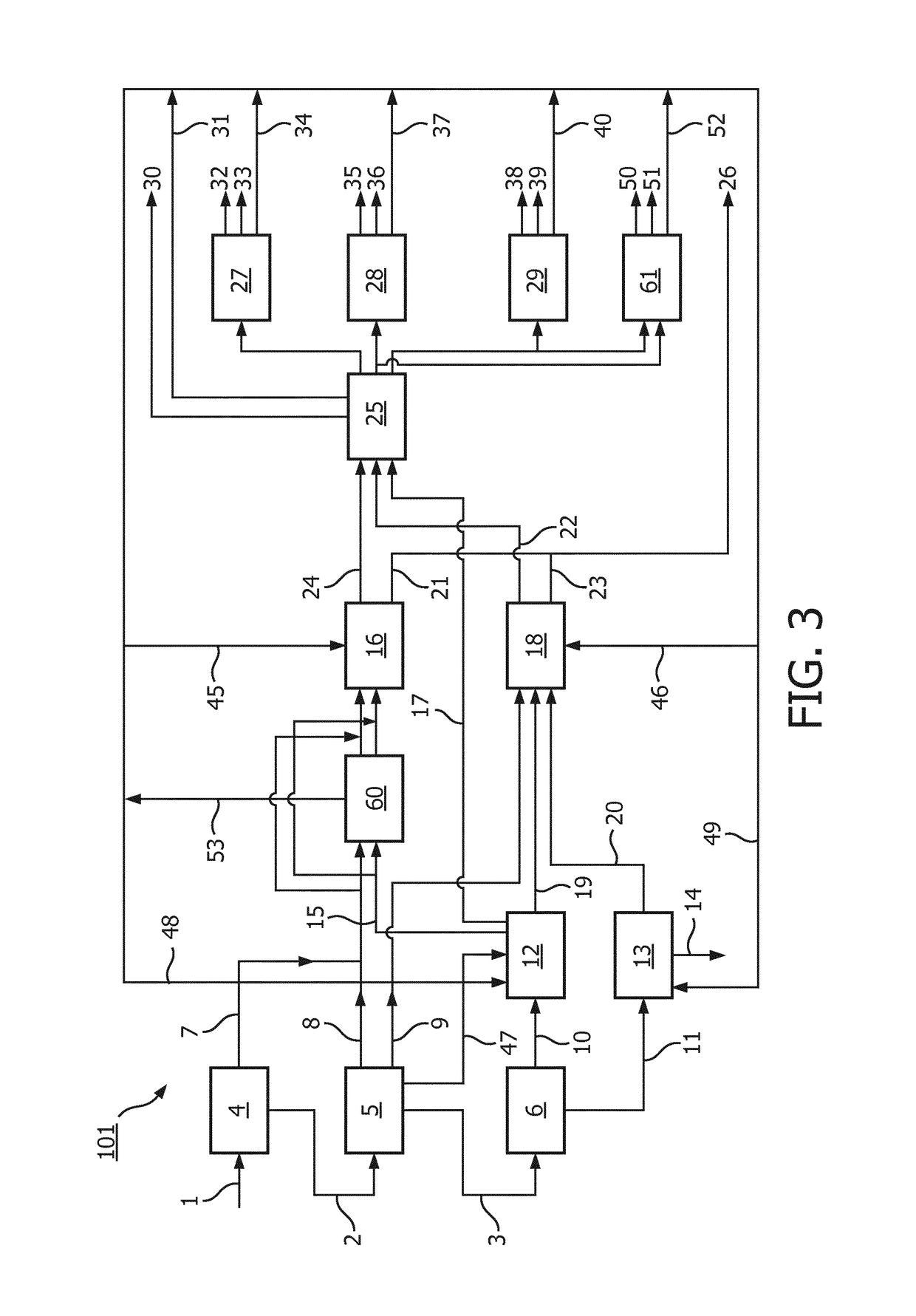Method of controlling the supply and allocation of hydrogen gas in a hydrogen system of a refinery integrated with olefins and aromatics plants
a technology of olefins and aromatic plants, which is applied in the direction of hydrocarbon oil treatment, thermal non-catalytic cracking, catalytic cracking, etc., can solve the problems of high capital cost, other costs associated with fractional distillation, and insufficiently high cost, so as to achieve well-controlled hydrogen economics
- Summary
- Abstract
- Description
- Claims
- Application Information
AI Technical Summary
Benefits of technology
Problems solved by technology
Method used
Image
Examples
examples 2 to 5 (according to fig.3)
Examples 2 to 5 (According to FIG. 3)
[0095]FIG. 3 contains two additional units: a catalytic naphtha reformer (60) and a LPG aromatization unit (61). These units were modelled based on data from literature.
[0096]In this flow sheet, the naphtha like streams from the crude distillation and from the VGCO hydrocracker and from the resid hydrocracker may be (partly) treated in a catalytic naphtha reformer before entering the FHC. Alternatively the propane and / or butane intermediate products may be sent (partly) to a LPG aromatization unit rather than dehydrogenation units.
[0097]Example 2 is identical to Example 1 except for the following: the lights and naphtha like streams from the crude distillation and from the VGCO hydrocracker and from the resid hydrocracker are separated in a depentanizer of which the C5− fractions is fed to the FHC unit, the C6+ fraction is fed to a catalytic naphtha reformer. The product of this reformer is again fed to the FHC unit (The depentanizer is not shown...
examples 6 to 10 (according to fig.3)
Examples 6 to 10 (According to FIG. 3)
[0103]Ex. 6=same as Ex. 1 except with crude feed Arabian heavy instead of Arabian light crude oil.
[0104]Ex. 7=same as Ex. 2 except with crude feed Arabian heavy instead of Arabian light crude oil.
[0105]Ex. 8=same as Ex. 3 except with crude feed Arabian heavy instead of Arabian light crude oil.
[0106]Ex. 96=same as Ex. 4 except with crude feed Arabian heavy instead of Arabian light crude oil.
[0107]Ex. 10=same as Ex. 5 except with crude feed Arabian heavy instead of Arabian light crude oil.
[0108]The examples show that the Hydrogen release−H2 uptake varies in a wide range (in examples 1 to 5 from 0.01 to 1.76 wt. % of crude, in ex. 6 to 10 from −0.89 to 0.81 wt. % of crude).
[0109]
Exam-Exam-Exam-Exam-Exam-Exam-Exam-Exam-Exam-Exam-ple 1ple 2ple 3ple 4ple 5ple 6ple 7ple 8ple 9ple 10FeedALALALALALAHAHAHAHAHRouting for Naphtha,naphthaFHC 16Reformer 60FHC 16FHC 16Reformer 60FHC 16Reformer 60FHC 16FHC 16Reformer 60propane and butane, UnitC2SC 27SC 27SC 27S...
PUM
| Property | Measurement | Unit |
|---|---|---|
| temperature | aaaaa | aaaaa |
| residence time | aaaaa | aaaaa |
| boiling point | aaaaa | aaaaa |
Abstract
Description
Claims
Application Information
 Login to View More
Login to View More - R&D
- Intellectual Property
- Life Sciences
- Materials
- Tech Scout
- Unparalleled Data Quality
- Higher Quality Content
- 60% Fewer Hallucinations
Browse by: Latest US Patents, China's latest patents, Technical Efficacy Thesaurus, Application Domain, Technology Topic, Popular Technical Reports.
© 2025 PatSnap. All rights reserved.Legal|Privacy policy|Modern Slavery Act Transparency Statement|Sitemap|About US| Contact US: help@patsnap.com



